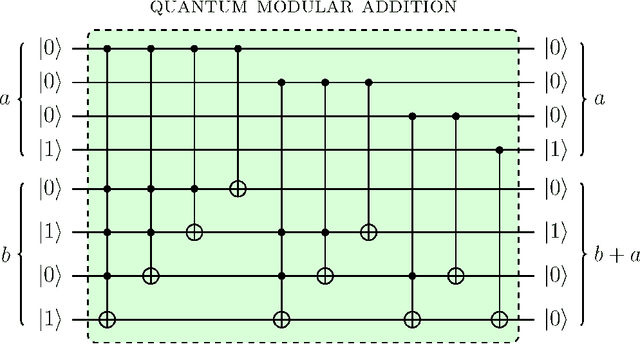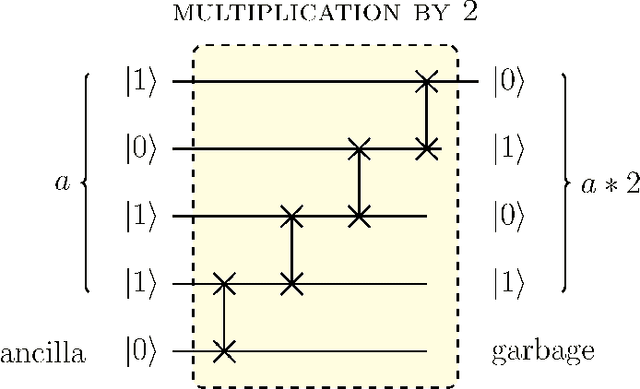Andrea Ceschini
Quantum Simplicial Neural Networks
Jan 09, 2025



Abstract:Graph Neural Networks (GNNs) excel at learning from graph-structured data but are limited to modeling pairwise interactions, insufficient for capturing higher-order relationships present in many real-world systems. Topological Deep Learning (TDL) has allowed for systematic modeling of hierarchical higher-order interactions by relying on combinatorial topological spaces such as simplicial complexes. In parallel, Quantum Neural Networks (QNNs) have been introduced to leverage quantum mechanics for enhanced computational and learning power. In this work, we present the first Quantum Topological Deep Learning Model: Quantum Simplicial Networks (QSNs), being QNNs operating on simplicial complexes. QSNs are a stack of Quantum Simplicial Layers, which are inspired by the Ising model to encode higher-order structures into quantum states. Experiments on synthetic classification tasks show that QSNs can outperform classical simplicial TDL models in accuracy and efficiency, demonstrating the potential of combining quantum computing with TDL for processing data on combinatorial topological spaces.
Q-SCALE: Quantum computing-based Sensor Calibration for Advanced Learning and Efficiency
Oct 03, 2024Abstract:In a world burdened by air pollution, the integration of state-of-the-art sensor calibration techniques utilizing Quantum Computing (QC) and Machine Learning (ML) holds promise for enhancing the accuracy and efficiency of air quality monitoring systems in smart cities. This article investigates the process of calibrating inexpensive optical fine-dust sensors through advanced methodologies such as Deep Learning (DL) and Quantum Machine Learning (QML). The objective of the project is to compare four sophisticated algorithms from both the classical and quantum realms to discern their disparities and explore possible alternative approaches to improve the precision and dependability of particulate matter measurements in urban air quality surveillance. Classical Feed-Forward Neural Networks (FFNN) and Long Short-Term Memory (LSTM) models are evaluated against their quantum counterparts: Variational Quantum Regressors (VQR) and Quantum LSTM (QLSTM) circuits. Through meticulous testing, including hyperparameter optimization and cross-validation, the study assesses the potential of quantum models to refine calibration performance. Our analysis shows that: the FFNN model achieved superior calibration accuracy on the test set compared to the VQR model in terms of lower L1 loss function (2.92 vs 4.81); the QLSTM slightly outperformed the LSTM model (loss on the test set: 2.70 vs 2.77), despite using fewer trainable weights (66 vs 482).
From Graphs to Qubits: A Critical Review of Quantum Graph Neural Networks
Aug 12, 2024



Abstract:Quantum Graph Neural Networks (QGNNs) represent a novel fusion of quantum computing and Graph Neural Networks (GNNs), aimed at overcoming the computational and scalability challenges inherent in classical GNNs that are powerful tools for analyzing data with complex relational structures but suffer from limitations such as high computational complexity and over-smoothing in large-scale applications. Quantum computing, leveraging principles like superposition and entanglement, offers a pathway to enhanced computational capabilities. This paper critically reviews the state-of-the-art in QGNNs, exploring various architectures. We discuss their applications across diverse fields such as high-energy physics, molecular chemistry, finance and earth sciences, highlighting the potential for quantum advantage. Additionally, we address the significant challenges faced by QGNNs, including noise, decoherence, and scalability issues, proposing potential strategies to mitigate these problems. This comprehensive review aims to provide a foundational understanding of QGNNs, fostering further research and development in this promising interdisciplinary field.
Quasi-Chaotic Oscillators Based on Modular Quantum Circuits
Mar 26, 2022



Abstract:Digital circuits based on residue number systems have been considered to produce a pseudo-random behavior. The present work is an initial step towards the complete implementation of those systems for similar applications using quantum technology. We propose the implementation of a quasi-chaotic oscillator based on quantum modular addition and multiplication and we prove that quantum computing allows the parallel processing of data, paving the way for a fast and robust multi-channel encryption/decryption scheme. The resulting structure is assessed by several experiments in order to ascertain the desired noise-like behavior.
 Add to Chrome
Add to Chrome Add to Firefox
Add to Firefox Add to Edge
Add to Edge